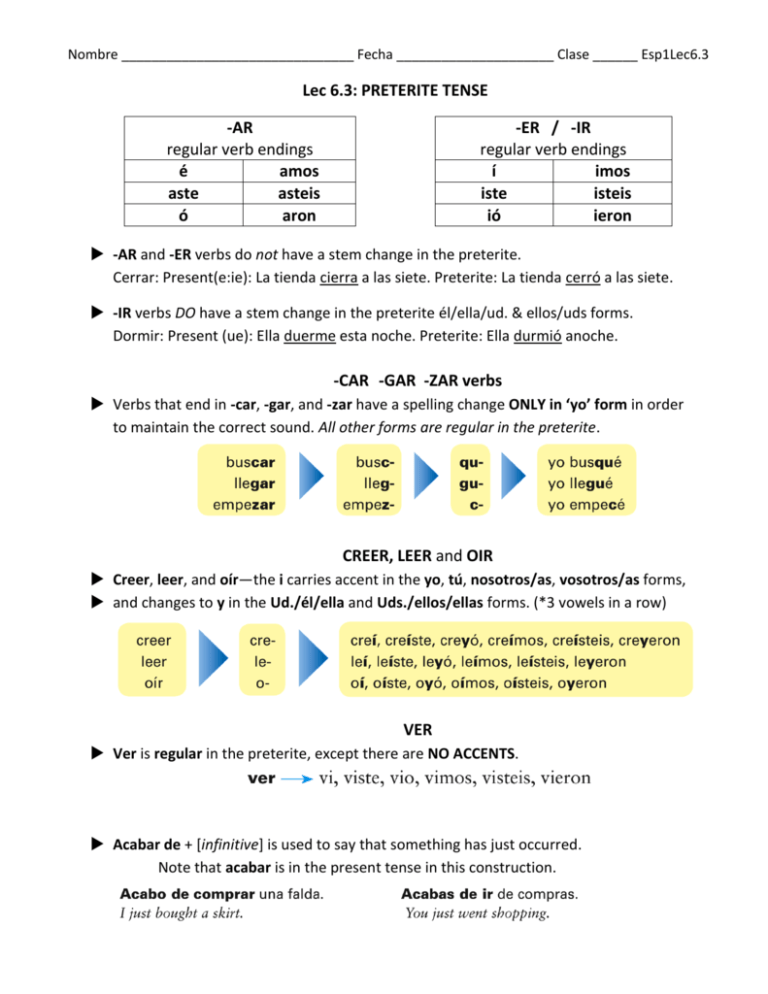

Table 4, which shows the English past tense form of ate, is a good example of regular – er verb forms in the preterite tense. The verb comer (to eat) is a regular – er verb in the preterite. The nosotros/nosotras form in the present tense is the only form where – er and – ir verbs are different. Notice that the nosotros/nosotras form of an – ir verb looks identical in both the present and preterite tenses, but an – er verb has a different nosotros form in the preterite. Table 3 shows that the endings for – er verbs and – ir verbs are the same for regular verbs in the preterite tense. Since the preterite is a past tense, these forms translate to the English past tense form “spoke.” Table 2 is a conjugation chart for the verb hablar in the preterite tense. Hablar (to speak) is a regular verb in the preterite, so it will serve as a good example. If you see one of these words in the sentence, you will know the verb is conjugated in the preterite tense. The only way you will know whether an – ar verb in the nosotros form is in the preterite or present tense is the context of the sentence. Regular – ar verbs have the same nosotros form in the preterite as they do in the present tense. The tú form is also different in the preterite tense: it never ends in –s like it does in the present tense. Remember to pronounce these words with the stress on the last syllable. The yo form of all regular preterite verbs always has an accent mark as well. Take note of the accent mark on the preterite forms because that is the only difference. The endings are a little confusing because the él, ella, and usted forms end in – ó in the preterite tense, but the yo form ends in – o (no accent) in the present tense. (Not all verbs that were regular in the present tense are regular in the preterite.) For an – ar verb that is regular in the preterite, use the endings from Table 1. To conjugate a regular verb in the preterite tense, remove the infinitive ending and add the appropriate endings. Quiz: Command Forms with Reflexive Pronouns.Reflexive, Prepositional, and Demonstrative Pronouns.

Verbs That Change Meaning in the Preterite.Quiz: Verbs That Change Meaning in the Preterite.Quiz: Irregulars in the Preterite Tense.Quiz: Stem Changers in the Preterite Tense.Quiz: Different Yo Forms in the Preterite Tense.Different Yo Forms in the Preterite Tense.Quiz: Regular Verbs in the Preterite Tense.Quiz Indirect Objects and Indirect Object Pronouns.Indirect Objects and Indirect Object Pronouns.Quiz: Direct Objects and Direct Object Pronouns.Direct Objects and Direct Object Pronouns.Quiz: Using the Right Pronoun to Answer a Question.Using the Right Pronoun to Answer a Question.Quiz: Interrogative Pronouns (Question Words).Interrogative Pronouns (Question Words).Stem-Changing Verbs in the Present Tense.Quiz: Common Verbs Irregular in the Present Tense.Common Verbs Irregular in the Present Tense.Quiz: Confusing Verbs: Determining which Verb to Use.Confusing Verbs: Determining Which Verb to Use.Quiz: Stem-Changing Verbs in the Present Tense.Quiz: Regular Verbs in the Present Tense.

The preterite is used for past actions that are seen as completed. The above examples all fall within our general rule for using the preterite: It began to snow at eight in the morning. The preterite is used to state the beginning or the end of an action. The preterite is used for actions that were part of a chain of events.Įlla se levantó, se vistió, y salió de la casa. The preterite is used for actions that were repeated a specific number of times, or occurred during a specific period of time. The preterite is used for actions that can be viewed as single events. Note: the nosotros forms for -ar and -ir verbs are the same in both preterite and present tenses: hablamos, vivimos. Here are all three regular preterite verb forms together: hablar To conjugate regular -er and -ir verbs in the preterite, simply drop the ending (-er or -ir) and add one of the following: To conjugate regular -ar verbs in the preterite, simply drop the ending (-ar) and add one of the following:
Ar er ir verb endings preterite how to#
In this lesson, you will learn how to conjugate -er and -ir verbs, and become more familiar with the uses of the preterite. You also learned how to conjugate regular -ar verbs. In the last lesson, you learned that the preterite is used for past actions that are seen as completed. Subjunctive VIII: Actions not yet completed Subjunctive III: Verbs that change orthographically Subjunctive II: Conjugating regular and stem-changing verbs


 0 kommentar(er)
0 kommentar(er)
